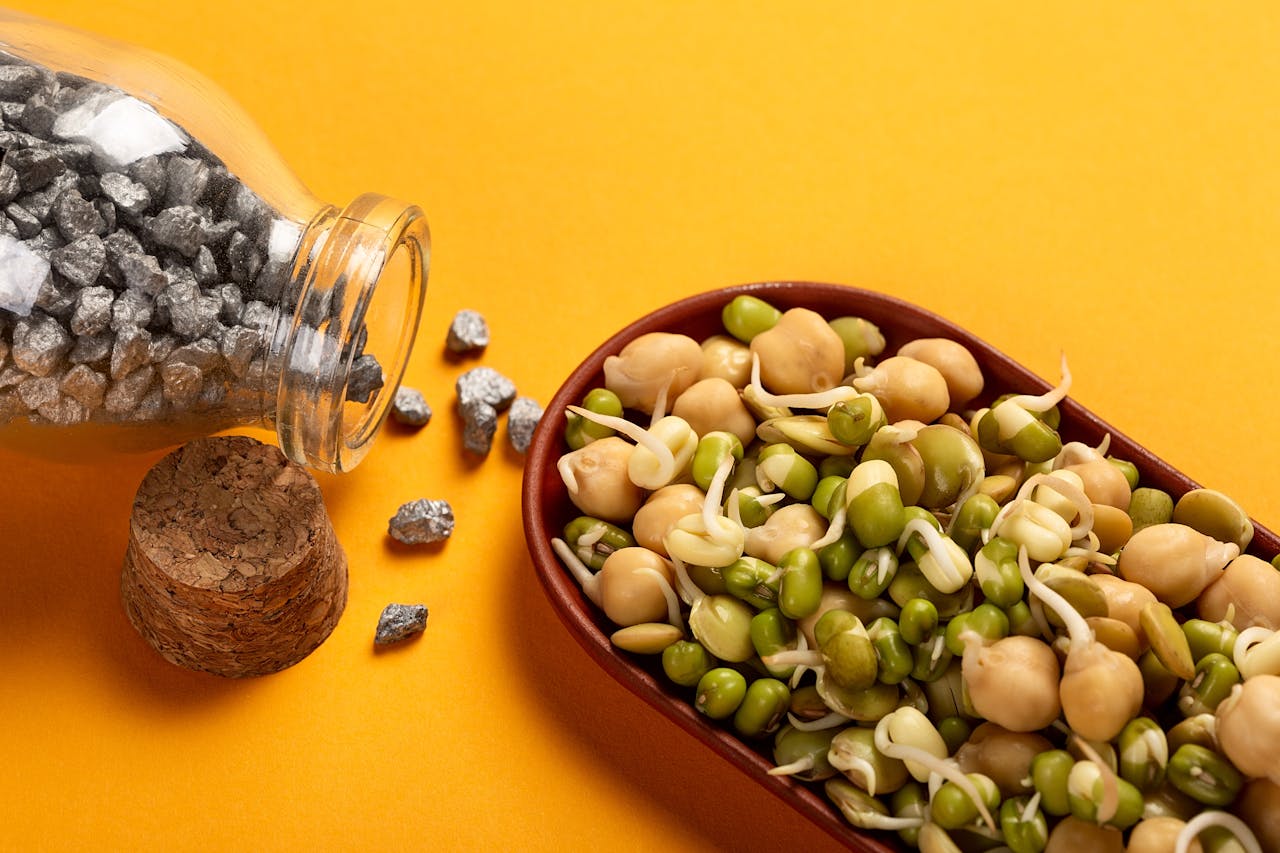Each system of traditional medicine takes into account the role of food in human’s life, but the most developed concepts belong to Ayurveda – the ancient Indian science of healing that appeared more than 5 thousand years ago. In the context of Ayurveda, foods are said to possess ‘dosage’ properties that regulate the three body doshas; Vata, Pitta and Kapha so that an individual will be healthy. These superfoods contain healthy nutrients and benefits in the health improvement process of this technique. Below are ten Ayurvedic superfoods that are good for consumption in order to improve on one’s health habits.
1. Turmeric (Haldi)
Benefits: Turmeric is also christened as the ‘Golden Spice of India’ and because of its capacity as an anti-inflammatory, antioxidant, and antiseptic. It contains curcumin that alones can reduce inflammation, enhance the body’s immunity and even improve the ability to learn and remember.
How to Use: Use it in curries, soups, or stews or, combine it with hot milk for a proper ‘Golden Milk’ beverage. It can also be added to a blender and taken with other fruits as a raw material, or added to roasted vegetables for that natural taste.
Also Read: How to Build Muscle: A Definitive Manual
2. Ashwagandha
Benefits: Ashwagandha is an effective adaptogen that supports the endocrine and hormonal system in the body in the face of stress. It assists in the proper functioning of the nervous system and helps to fight fatigue and dimness of the mind. It also has a positive effects dealing with people’s sleep and anxiety.
How to Use: Ashwagandha is normally taken in powdered form or capsules, and commonly used in the Indian herbal medicine. It is recommended to consume this powder added to the smoothies, warm milk, or herbal teas. Therefore, it can be used as a supplement; however, the user should seek a doctor to determine the right proportion to use.
3. Amalaki (Amla)
Benefits: Vitamin C enriched and antioxidant, amalaki is also referred to as Indian Gooseberry. It helps the immunity, skin, and the gut. Amalaki also has anti-inflammatory uses and it supports liver purifying.
How to Use: They could eat the fresh fruits, dry fruits, or even in the form of powder. People have to mix the powder in a smoothie, juice, or in water or eat as a complement. Raw amalaki can be eaten whole=preservative free fresh amalaki can be eaten as a fruit.
4. Triphala
Benefits: Triphala is a combined result of three fruits- Amalaki, Bibhitaki, and Haritaki. This one is widely known as a strong detoxifying agent and an aid to digestion. Triphala can help modulate bowel movements, maintain healthy digestion and is also good for absorptive functions.
How to Use: The classical way of consuming Triphala is in the form of a powder though it is also available in capsules. Bitter variants should be prepared by adding warm water into the powder and it should be taken before having food, or taken as a supplement. It can also be added to herble teas.
5. Ginger
Benefits: Ginger has been famously used and recommended for digestion issues. It is useful when it comes to stimulating digestion, eliminating nausea, and decreasing any discomfort that one might feel in the stomach. Ginger also has an anti-inflammatory and antioxidant characteristics that help enhance wellness.
How to Use: Vegetable parts a cling can raw ginger be put in drinks, foods like tea, soup, foods prepared by frying. Ginger powder is one of the spices that can be used in baking and cooking preparing. You can as well take a glass of ginger juice or a glass of ginger water.
6. Tulsi (Holy Basil)
Benefits: Tulsi is said to have adaptogen in the context of Ayurveda. To this extent, it assists in decreasing the stress levels, increase immune capacity, and enhance respiration. Tulsi also exhibits activity as an anti-inflammatory and antioxidant property.
How to Use: Tulsi leaves can be used to prepare tea, incorporate into milk shakes or used as a spice. Minerals and vitamins supplements are also available with brand name as Tulsi. Live preferably be added to salads, or the greens used as a garnish.
7. Fenugreek (Methi)
Benefits: The seeds that are made from it contain fibres and many essential nutrients. They are healthy to the heart, manage blood sugar levels, support digestion and possess antioxidant properties that reduce inflammation. It is also useful in increasing milk production in nursing women.
How to Use: Fenugreek seeds can be taken by soaking them, these seeds can be soaked throughout the night and consumed next morning. They can be also used when sprouted and added to salad bowls. Fenugreek powder also comes in the form of capsules and can be consumed as a spice in the foods that one prepares.
8. Neem
Benefits: It has many health benefits for example it is known to have a strong detoxifying ability. Then it is good for the liver, clean the blood and also enhance the health of the skin. Furthermore, Neem has antibiotic features; thus, it can be used to fight against infections.
How to Use: Neem leaves may be used in the preparation of tea, cooking food, as well as used externally where the skin problems are found. Another use of neem oil is its skin and hair care uses and benefits. Neem supplements come in two varieties, that is a capsule or a powder.
9. Cardamom (Elaichi)
Benefits: Cardamom is a spice with great aroma and does wonders to the digestion process, clears up the bloated tummies and even clears up breathe. It also has properties that are rather beneficial to the body by acting as the natural detoxifying compound and regulating blood pressure. It is well known that dish whose preparation involves cardamom will receive an added value as to its taste and smell.
How to Use: To match the flavor of its name, cardamom could be included in teas, coffees as well as desserts. It can also be applied in the preparation of other dishes such as curies and rice. It is also a traditional remedy as a breath freshener; all one has to do is chew on the seeds of the cardamom.
10. Ghee (Clarified Butter)
Benefits: Ghee is commonly used in Ayurvedic preparatons. It helps in digestion, promotes sound health of the body and is a good booster to the immune system. Ghee also contains vitamins and antioxidants amongst other health benefiting fats. It also improves the conditions of the human skin and eyes.
How to Use: Consume ghee as the oil when preparing foods or sprinkle it over your meals as a sauce. You can spread it on toast, mix into soups and stews, or in any baking you wish to do. Ghee can also be consumed in the morning on an empty stomach for the purpose of health boons.
Top Ayurvedic Superfoods You Should Include in your Diet
Including these Ayurvedic superfoods may not be a challenge; on the contrary, it can be fun. Here are a few tips to help you get started:Here are a few tips to help you get started:
- Start Slow: Do not take more than one or two superfoods at a time because the body needs time to adjust to the change. That will help you see the changes in your body and comprehend how each of the superfoods you are using influence you.
- Mix and Match: Thus prepare meals using different superfoods to make them tasty and healthy. For instance, include turmeric and ginger into your soups and smoothies, include triphala powder into your morning juice.
- Experiment with Recipes: Introduce new recipes that include these super foods should be practiced. Subscribing to certain cookbooks and online sources can help you come up with the ideas you need for healthy meals.
- Stay Consistent: In term of treatment, the Ayurveda treatment can be said to be constant or long term. For the desired effects of these superfoods, incorporate them into your day-to-day dietary plan.
- Consult an Ayurvedic Practitioner: If you are a beginner and are planning to select an Ayurvedic treatment then it is advisable to meet an Ayurvedic doctor. One can get a unique chiropractic care plan depending on their dosha and general health.
Note for post
You can term Ayurvedic superfoods as diet solutions that are natural and perfect to improve the quality of life. Hence, by including these foods in your diet, these will help the body to build up ramparts, facilitate digestion, enhance immunity, and achieve good health. Learn from the practices of Ayurveda and learn how these ancient superfoods can change your life.


0 thoughts on “Top 10 Ayurvedic Superfoods You Should Be Eating”